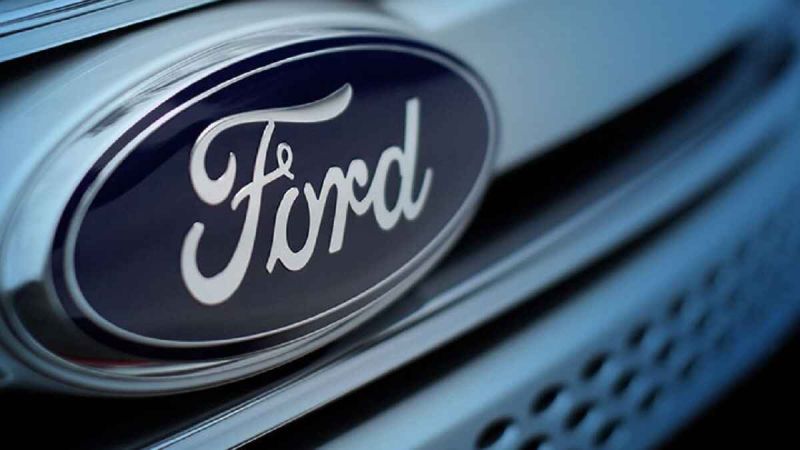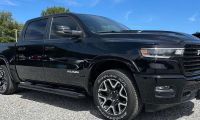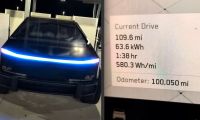If you are of a certain age, you probably remember when you had your first AM transistor radio. And even if you aren’t of that age – let’s call it anywhere over fifty or so – you probably wondered why there were a couple of special triangles on the radio dial, one at the low end, around 530 kHz, and one at the top end after 1600 kHz. If you took a magnifying glass of sufficient strength, you might have seen the letters CD in the middle of the triangles.
Symbols Of A Bygone Era Still Relevant
Of course, it depended on the size of the radio dial. Still, if you were a child of the era, you would have known that those symbols were where you were supposed to turn if trouble was brewing and national safety information was being transmitted. Those two triangles stood for the CONELRAD. It was the forerunner of today’s EAS or Emergency Alert System, primarily an FM or broadcast system included anywhere an alert tone can be sounded.
Ford Expands Its Mobile Service Program
And you might think that the older system was somehow quaint and didn’t have much value today when it seems there is information available everywhere on the internet, through social media platforms, FM radio systems, and cable systems. All of our emergency information needs seem to have been met. After all, having this rich variety of information sources would seem to obviate the need for anything older, like the old AM radio systems.
Here's the thing, however. There are times when the internet is down; cable is down; social media sites are down, and those ubiquitous smartphones are down. This is because the system underlying them is down. If you remember when the world was limited to simpler flip phones, when you had to search for signals, then you can appreciate the situation you might be in. Without that ubiquitous network floor, you have catch-as-catch-can instead of having a wide array of “smart” devices giving you information.
And, here’s the beauty of those ancient, quaint AM (amplitude-modulated systems), all you need is a receiver capable of intercepting those signals, and you can get all of the information you want or need. As they say, “Who’d have thunk it?” An ancient system that is as old as radio itself – more than a century. It isn’t necessary to describe how an AM system works and how the choice of frequencies assists its working. Suffice it to say, though; it provides long-range information potential that is there when the rest of the internet and the things layered upon it are gone.
Ford Hopes To Make "Lightning" Strike Again
AM-Style Radio Still In The Mix
The fact is that when local emergency authorities hold drills – usually monthly but often more frequently – they routinely exercise radio frequencies that are near or slightly above those allotted for AM emergency alerting. The reason is that emergency authorities know the value of this type of radio.
So, why did we give you all this background on the need for AM radio? It is simple: Ford’s Jim Farley, president, and CEO, recently announced the deletion of AM radio from nearly all Ford products starting next year in the U.S. and Canada, except for commercial vehicles.
Ford Hopes To Help Charging Network Grow
This decision, says the Ford Authority, a site for information about the automaker, “stirred up a hornet’s nest.” The site, fordauthority.com, emphasized that this “drew the ire of customers that still use and enjoy AM radio, but also a host of lawmakers concerned that its removal might impact emergency broadcast situations.” This prompted lawmakers to file legislation requiring carmakers to keep AM radio.
Okay, so Farley backed down, but this didn’t stop a Ford-allied lobby outfit, the Alliance for Automotive Innovation (AIA), from trotting out statements in opposition to AM radio.
AIA argues isn’t “AM radio isn’t necessary” to quote a story in the industry trade paper Automotive News.
Lawmakers Act On AM Radio
AIA, is expected to continue this argument when it appears before the House Subcommittee on Communications and Technology. The panel is scheduled to discuss the “proposed bill, called the AM for Every Vehicle Act, which would direct the National Highway Traffic Safety Administration (NHTSA) to issue a rule requiring automakers to keep AM radio in new vehicles at no extra cost to consumers,” the Ford Authority said.
Ford To Bring Ranger Raptor to the U.S. Market
AIA CEO John Bozzella told the Ford Authority, “Whether or not AM radio is physically installed in vehicles in the future has no bearing on the multiple methods of delivering those emergency communications alerts to the public. Mandating audio features in a vehicle isn’t necessary. Congress hasn’t ever gone this route, especially in a competitive environment with so many choices – many of them free.”
He continued that “AIA members are ‘committed to ensuring drivers have access to free, public alerts and safety warnings through the Federal Emergency Management Agency’s Integrated Public Alert and Warning System,”
AIA vice president of safety policy, Scott Schmidt, wrote in his testimony, which will be presented to the House panel today. “The intent is not for the public to rely on a sole source to receive the alerts but to create a ‘net’ of sources to receive them. In other words, the more, the better.”
Lawmakers Push Back On Ford Ally
On the flip side, lawmakers supporting the bill argue that there are times when access to this information could be limited, meaning that AM radio could play a vital role in the event of an emergency. This includes “when the cell phone runs out, the internet gets cut off, or the television doesn’t work because of no electricity or power to your house,” according to U.S. Rep. Josh Gottheimer.
Ford Motor Photo,
Marc Stern has been an automotive writer since 1971 when an otherwise normal news editor said, “You're our new car editor," and dumped about 27 pounds of auto stuff on my desk. I was in heaven as I have been a gearhead from my early days. As a teen, I spent many misspent hours hanging out at gas stations (a big thing in my youth) and working on cars. From there on, it was a straight line to my first column for the paper "You Auto Know," an enterprise I handled faithfully for 32 years. Only a few people know that I also handled computer documentation for most of my earnings while writing YAN. My best writing, though, was always in cars. My work has appeared in Popular Mechanics, Mechanix Illustrated, AutoWeek, SuperStock, Trailer Life, Old Cars Weekly, Special Interest Autos, etc. You can follow me on: Twitter or Facebook.












